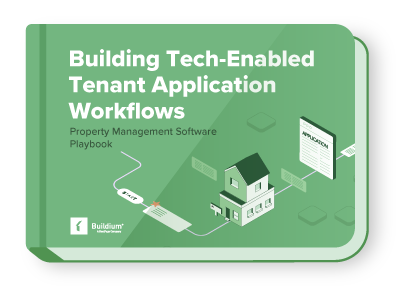The end of the year is fast approaching, which means it’s time to start putting together your budget for 2021. Allocating money for fixed costs like payroll and software is pretty straightforward. But it can be a bit trickier to figure out how much money you should put aside for your property management marketing budget.
Chart of Accounts
Want clearer, cleaner books? What about a more useful view into your properties or just easier accounting in general?
Get the GuideFor businesses with less than $5 million in revenue, the Small Business Administration recommends allocating 7 to 8 percent of your budget to marketing. But there’s a lot to consider before you just carve out a generic percentage.
Before you invest that money in marketing, think about what you want to accomplish in the next fiscal year. You may, in fact, need to allocate more (or even less) toward marketing, depending on where your business is in scaling, acquiring new clients, and filling vacancies.
In this post, we want to illustrate our points with an example of an actual property management business. Of course, we realize that 2020 and 2021 are huge wild cards when it comes to budgets, clients, and residents, and your situation will have to take that into account.
But for the purposes of this article, we’ll use a property management business with a decent portfolio that cleared $4,000,000 last year and is looking to expand their reach with prospective residents and perhaps take on one or two other clients.
With this example in mind, we’ll take you through the steps of creating a solid property management marketing budget.
#1: Base Your Marketing Budget on Your Goals
The amount you allocate to your budget should reflect your marketing goals. If you are a brand-new company looking to grow your portfolio, you may allocate more budget to marketing, for instance. If you are well-established with a robust portfolio and low vacancy rates, however, you may spend less on marketing and more on expanding your amenities and service offerings.
Once you’ve determined how much of your budget will go to marketing, segment it further into different marketing buckets based on important outcomes for your business.
If your goal is awareness, you’ll allocate money toward digital ad spend and, perhaps, setting up a website. If you’re expanding into new markets, you may spend more money on rebranding to reflect that expansion. If it’s simply to maintain your reputation and attract more residents, you may focus your time on content and social media marketing.
We’ll go over that part more in a minute.
We outlined the goals of our imaginary business. Because they have no grand marketing plans to create exponential growth, they are going to go with the SBA’s recommendation and allocate 7 percent to marketing. So, that’s $280,000.
#2: Determine How Quickly You Want to (and Can) Grow
Business growth is still a big ticket item for property management companies. According to Buildium’s 2021 Industry Report, 3 in 4 property managers still expect their portfolios to grow over the next 2 years, despite the challenges of the pandemic.
But imagine this: In order to hit your ambitious goals, you put a good chunk of your budget toward client lead generation through a Google Display Network ad campaign. Suddenly, your phone is ringing off the hook and meeting requests from your site are filling up your inbox.
Your marketing campaign really paid off, right? Only if you can grow fast enough to handle a sudden surge of new owners. Because after all, taking on new owners means hiring additional staff and contracting with new or existing vendors to care for their properties. It means onboarding them and their residents into your systems, and putting money toward filling their vacancies.
If you’re not in a position to expand quickly, having that many leads knocking on your door could actually hurt your reputation.
So instead of spending your marketing budget on an expensive campaign with a wide reach, you may want to consider a more strategic plan that doesn’t cost as much.
Our property management business doesn’t want to grow too quickly. Rather than spend money on client acquisition, they would rather explore new channels for resident marketing and improve their website for a better resident application experience.
So, they may set aside a few thousand to account for new owner client acquisition, particularly if they, for some reason, have a high churn rate.
#3: Have a Clear Picture of Your Operation Costs
Before you start putting money into your marketing budget, make sure you know how much money you have to start with and how much of that typically goes to overhead, payroll, software and business services, etc.
But wait, you’re not done.
Then, determine how much operation money you’d need if you met your marketing goals. That’s the amount of money you should be putting aside for operations.
To extend their reach with prospective residents, our company wants to invest in some better property management software that handles listings, improves their website, and makes the application easier.
They may also need to hire one more sales rep or a social media manager (or both). So, a large amount of their budget, perhaps $150,000 would go toward those initiatives.
#4: Parse Out Your Property Management Marketing Budget
So now you probably have a general idea of how much money you can set aside for your property management marketing budget. But don’t think of it as one giant pool of money to dip into for anything marketing related. Instead, allocate every dollar of that money to each step in your marketing strategy.
Of course, first you’ll have to put together a marketing strategy. To do that, check out our Ultimate Marketing Checklist.
Create a line item for every action you want to take.
A PM Marketing Budget Example
Property management marketing company Four and Half surveyed their clients to get a sense of how much they were spending on marketing. And while the survey is a bit older, it’s still a good starting point.
The property managers they surveyed averaged about 514 doors, and most settled on a budget between 1 and 7 percent, or about $2.24 per unit. Of the $1,150 spent per month, most of that – about $1,023 – went to online marketing.
Here’s a breakdown of where that money went:
- 20 percent to site maintenance and optimization
- 15 percent to social media maintenance and posts
- 30 percent to pay-per-click campaigns
Take a Look at Your Sales Funnel
Where do you want to concentrate the most money? Is it in advertising/filling your properties or your own business? Perhaps you want to concentrate on retention.
Allocate a general percentage of your marketing budget to each part of the funnel, with emphasis on the part that’s most important to you every quarter and over the course of the year.
For our property management business, we already know they’re going to allocate funds toward some overhead changes.
Their remaining budget is going to focus on awareness and interest, since they are trying to expand to new resident audiences.
Understand How to Reach Your Audience
Now it’s time to put some hard numbers against your marketing goals. For every part of the sales funnel, determine the best way to reach your audience.
To raise awareness of your business, blog and social posts that appear on the platforms your audience gravitates toward may be effective. A fair amount of advertising in trade journals may be more effective, however, for owners.
Internal marketing initiatives, such as email newsletters or events (virtual or otherwise) for residents may be a good plan to boost retention.
Put some real numbers against the cost of your marketing tasks to further flesh out your budget.
Our property management business will have to determine where their target audience is online, for example. Which social sites do they frequent? If they want to do some paid posts on social, how much will that cost?
Always Have a Line Item for Marketing Listings
No matter what, don’t forget the funds you need to market your listings. This is such a regular part of your business. Keep a line item in your budget to account for marketing and syndicating listings—and monitor each channel’s efficiency in bringing in leads over time.
Pro tip: Follow listing technology trends and include some cushion in your budget, in case there is an unexpected increase in vacancies or advertising prices increase (e.g. Zillow’s recent pricing changes). There are still more cost-effective ways to syndicate that don’t cost you a dime like Zumper.
Look for Free Marketing Options
Keep your eyes open for free opportunities to support your marketing efforts. If a resident or owner is particularly happy with your service, encourage them to leave a review on Yelp or your Facebook page, and build this request into your process automatically.
And speaking of Facebook, don’t forget to set up your business pages on social. It’s free, and it’s a great way to get the word out about your business.
Finally, make residents aware of vacant units and let owners know if you’re looking to add new properties to your portfolio. They can help spread the word to fill vacancies and grow your portfolio.
When you look at your budget and all the things you need to include (salaries, vendor payments, hardware and software) it can be tempting to say “Well, I’ll just use whatever’s left over for my marketing.”
Don’t fall into that trap. Marketing is just as important to your business as every other line item in your budget. Your marketing tasks will get your name out to new owners, help you fill vacancies, and build your reputation as a reliable, professional property management business.
The money for your property management marketing budget should always be there. The real trick is figuring out how much. Do that by strategizing, researching, and putting real numbers against your goals and seeing where it gets you.
Read more on Growth

